South Dakota Teachers Travel by Bus from the Great Plains to the California Coast to Bring Ocean Literacy to Inland Students
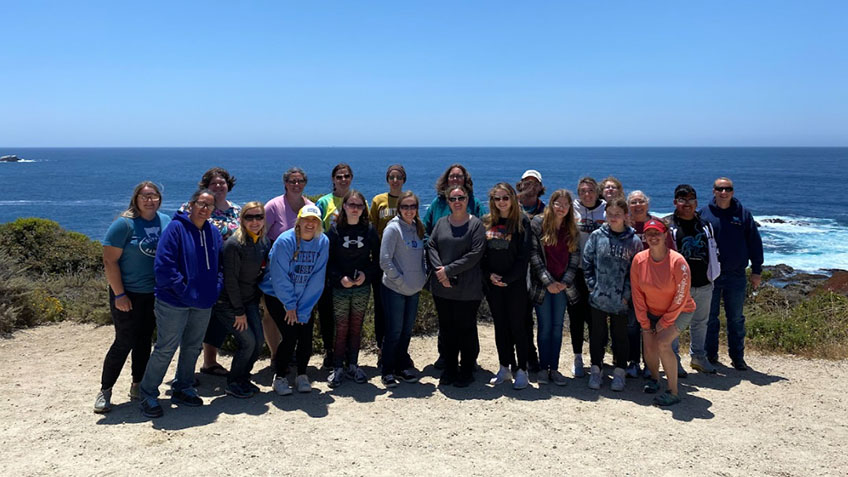
Image courtesy of Spencer Cody. Download largest version (jpg, 493 KB).
Spencer Cody, a secondary science teacher in Edmunds Central School District in South Dakota, has long been an advocate for incorporating ocean literacy principles into the classroom. This two-time NOAA Teacher at Sea alumni and three-time NOAA Planet Stewards awardee is well-versed in bringing ocean concepts alive for middle and high school teachers and students living far from the coast through NOAA curriculum resources and experiential learning opportunities.
This year, with grant funding from NOAA Ocean Exploration and the National Marine Sanctuary Foundation, Mr. Cody continued building capacity for ocean literacy and science, technology, engineering, and mathematics workforce development by not only bringing ocean science to South Dakota classrooms, but by bringing South Dakota educators and students to the ocean! The project, called The Great Plains Ocean Institute, included a semester-long professional development program focused on curriculum development to improve ocean literacy in students, encourage ocean stewardship, and generate student interest in ocean science careers.
Mr. Cody, in cooperation with the South Dakota Department of Education, recruited 16 middle and high school teachers from across the state, targeting public and tribal schools in rural districts with significant Native American populations. The Great Plains Ocean Institute included a semester-long virtual component followed by a week-long road trip to the California coast on none other than a school bus!
During five two-hour virtual sessions led by Mr. Cody, teachers learned about the Ocean Literacy Essential Principles and Fundamental Concepts, stewardship opportunities, and resources to develop an ocean module to implement in their classrooms. The culminating in-person field experience included water-based and shore-based activities within both the Monterey Bay and Channel Islands national marine sanctuaries. The program was designed to provide teachers with no prior exposure to marine environments with a diversity of coastal experiences over five days that they could then draw from when developing their ocean modules for the classroom.
Pictured below are an array of field experiences in which teachers participated.
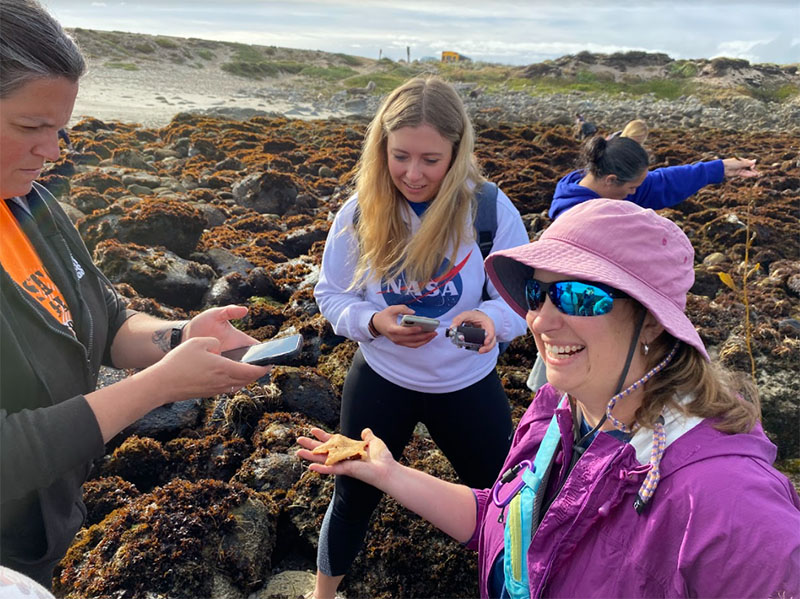
South Dakota teachers explore tide pools in Monterey, California as they learn how animals like sea stars, anemones, crabs, and clams adapt to an ever-changing environment. Image courtesy of Spencer Cody. Download largest version (jpg, 758 KB).
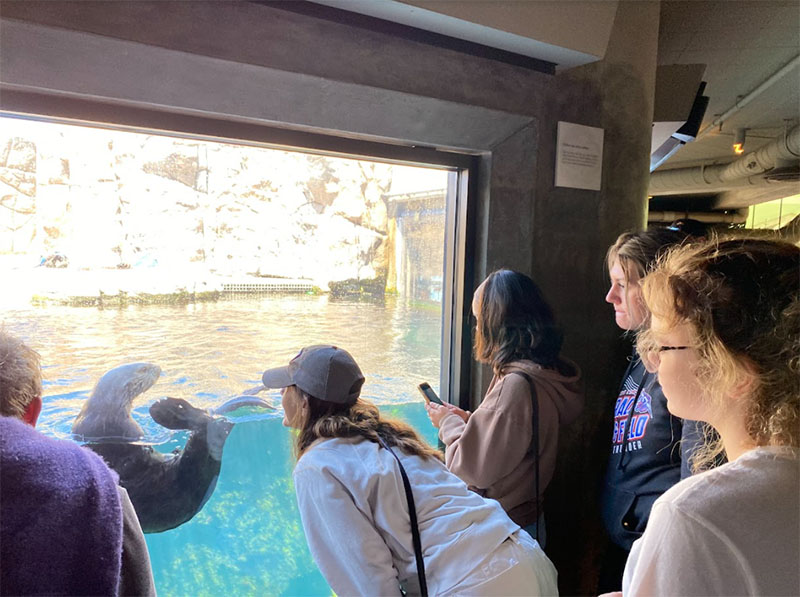
Teachers explored exhibits at the Monterey Bay Aquarium to learn about California marine sanctuaries and animals that reside in the kept forest, including this sea otter. Image courtesy of Spencer Cody. Download largest version (jpg, 606 KB).
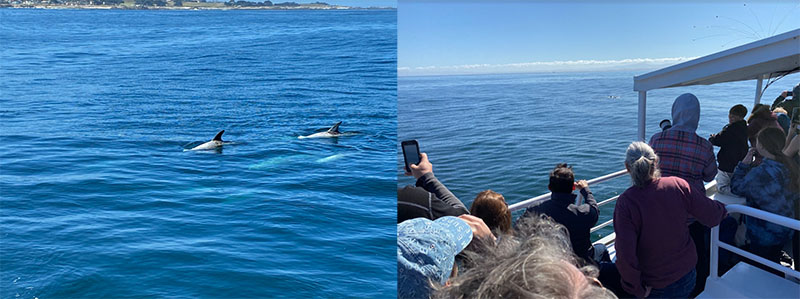
Teachers embarked on a whale watching cruise of Monterey Bay and spotted longnose dolphins, Risso’s dolphins, sea lions, gulls, cormorants, and humpback whales. Image courtesy of Spencer Cody. Download largest version (jpg, 1.2 MB).
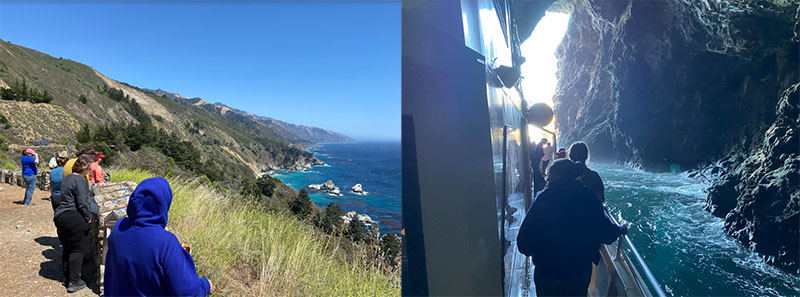
Teachers spent three days exploring Channel Islands National Park including Anacapa Island, Santa Cruz Island, and Santa Rosa Island. Image courtesy of Spencer Cody. Download largest version (jpg, 493 KB).
Cohort teachers reached 441 middle and high school students through their ocean-themed modules. Pre- and post-survey data collected from students showed a 25.8% increase in Ocean Literacy Principle recognition following ocean lesson implementation as well as increased stewardship in the classroom. Student awareness of marine science careers also increased significantly from the program with students ultimately being able to list 32 different marine science careers, up from 4 in pre-surveys. The data support the Great Plains Ocean Institute goals of teachers and students demonstrating an increase in knowledge and understanding of ocean literacy principles as well as career opportunities in the field of marine science.
One teacher, Michael Mitchell, had this to say about the experience:
“Perhaps most importantly, the inherent personal meaning these memories have after experiencing them firsthand will allow me to convey the importance of the ocean and marine ecosystems to my students in a more genuine way – and possibly foster interest in them that would have otherwise been left untapped.”
NOAA Ocean Exploration and the National Marine Sanctuary Foundation are proud supporters of the work of the Great Plains Ocean Institute in fostering an understanding of the value of marine ecosystems. Learn more about the bus trip to California and daily field experiences from Spencer Cody’s guest blog featured on the National Marine Sanctuary Foundation website.
Published September 12, 2022